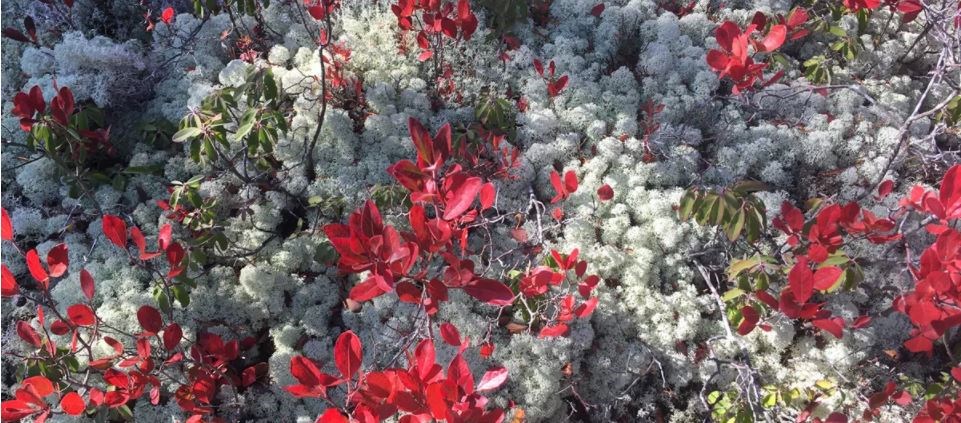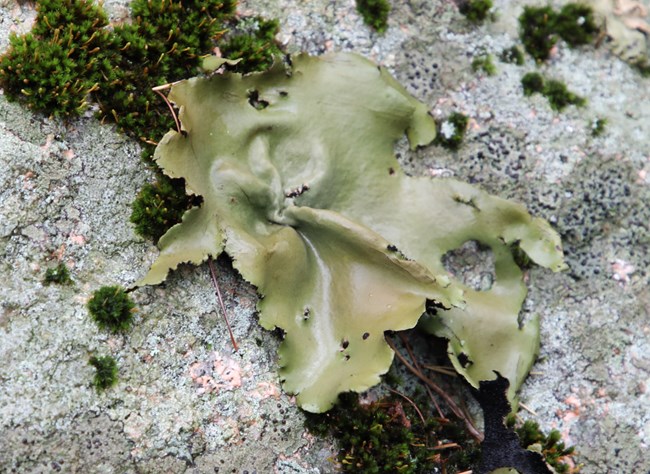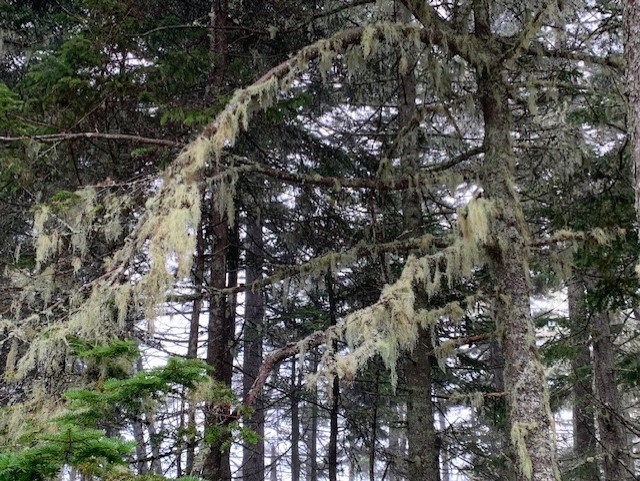
NPS Photo/Emma Lanning 
NPS Photo/Emma Lanning Relationship on the RocksNot quite a plant, not just a fungus, lichen doesn’t fit easily into any one category. A lichen is a partnership between two or more living things, usually a species of fungi benefitting from one or more plant-like organisms such as green algae or cyanobacteria. This partnership allows lichen to survive challenging conditions in each of the ecosystems found in Acadia National Park.
The mystery of lichen lies in the details of this unique relationship. Lichen-forming fungi are rarely found surviving on their own. Fungi are well-known as decomposers, relying on other organisms as their source of food rather than producing energy through photosynthesis (in fact, fungi are considered more closely related to animals than the plant-like organisms they associate with to form lichen). On a microscopic scale, lichens have a protective fungal layer that prevents the algal layer from drying out--this allows the photosynthetic partner, or photobiont, to survive in drier conditions. In this way, the building blocks of a lichen form a composite organism that is greater than the sum of its parts. 
NPS Photo/Sardius Stalker 
NPS Photo/Mary Ann Schaefer Why Look at Lichen?As one of the most lichen-diverse national parks, Acadia’s flora has long drawn interest from visitors and scientists alike. The 1894 Flora of Mount Desert Island, Maine listed 214 species of lichen. Since that time, as more species have been recognized, the list has grown to over 400. This speaks to the variety of Acadia’s climate and ecosystems, including 53 different plant communities, across its relatively small area. Upon visiting field study plots in 1929, botanist and lichenologist Charles C. Plitt wrote, “leaving one and entering another, one might think that he had been transported hundreds of miles distant, instead of but five”. Studying lichen allows us to witness landscape-level changes on a small scale. Today, lichen has much to teach us about human impacts on the atmosphere. Unlike plants with root systems and leaf pores, or stomata, to control gas exchange, lichens absorb gases needed for respiration and photosynthesis across the entire surface of the organism. As a result, these slow-growing lifeforms are sensitive to atmospheric pollutants, such as sulfur dioxide from oil and coal-fired power plants. Lichen diversity can serve as an estimate of air quality; the absence of a certain species within its known range may indicate adverse conditions that will impact other living things as well. Analyzing the amounts of heavy metals, carbon, and sulfur present in lichen allows scientists to study the changing composition of the atmosphere. The long strands of lichen that hang down from the forest canopy are remarkable for their beauty, but also offer a glimpse into the ecosystem’s past and future. |
Last updated: February 25, 2022
